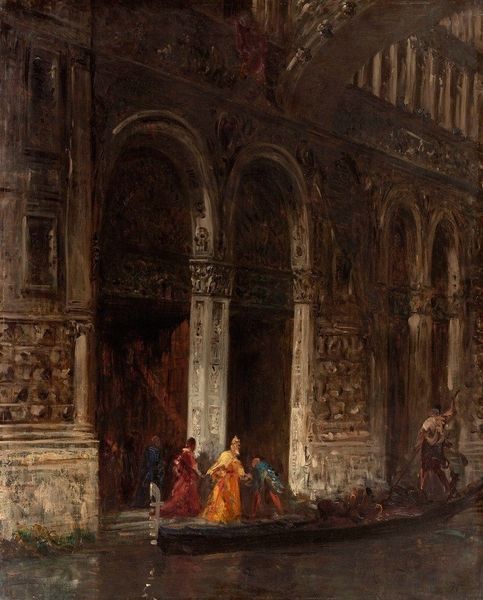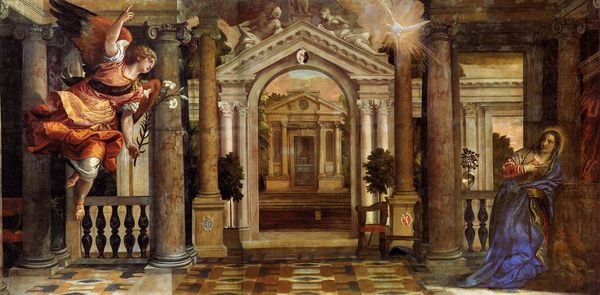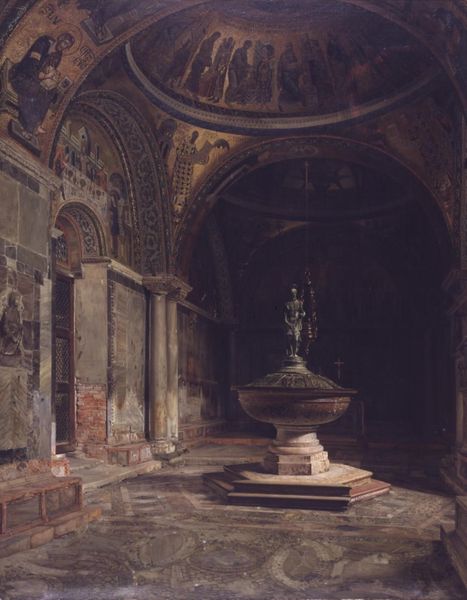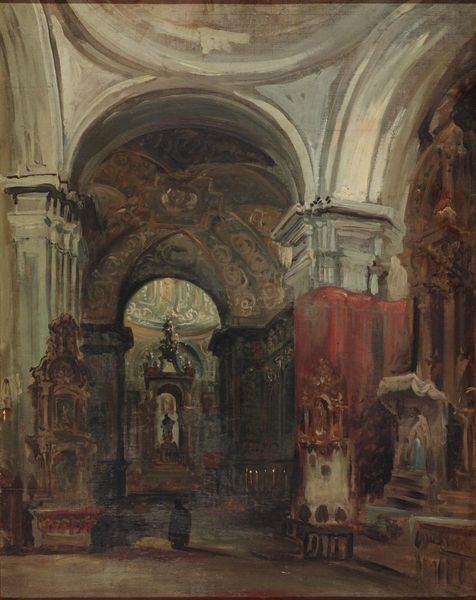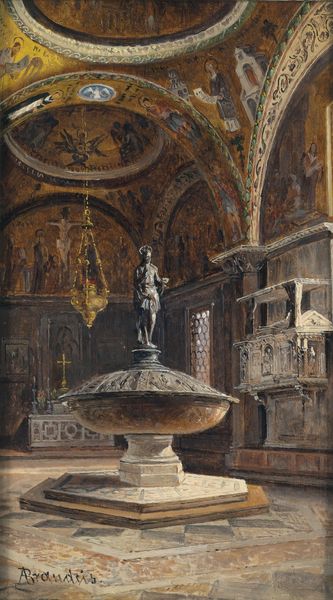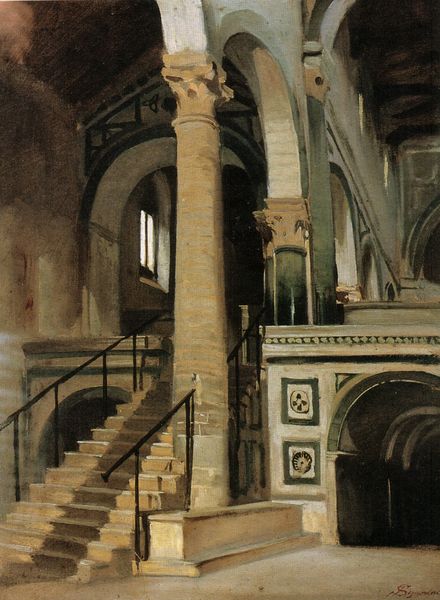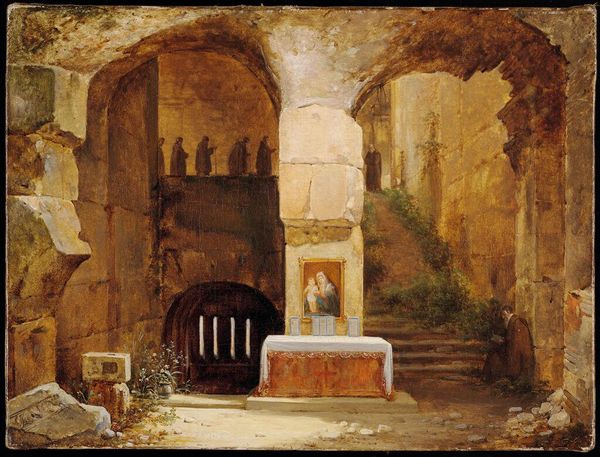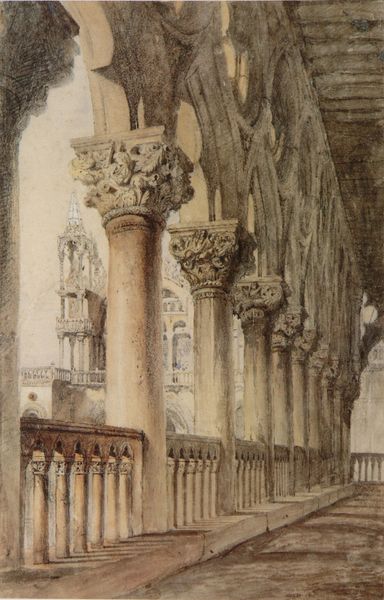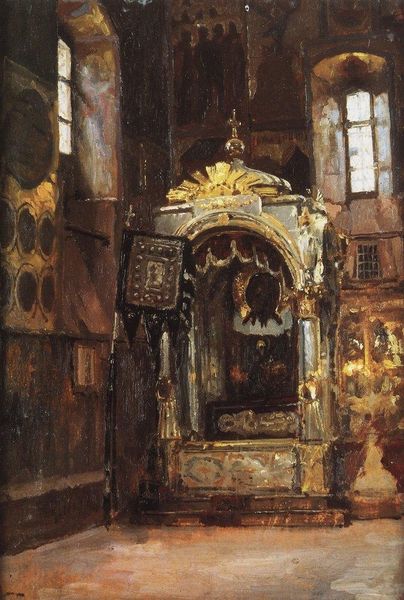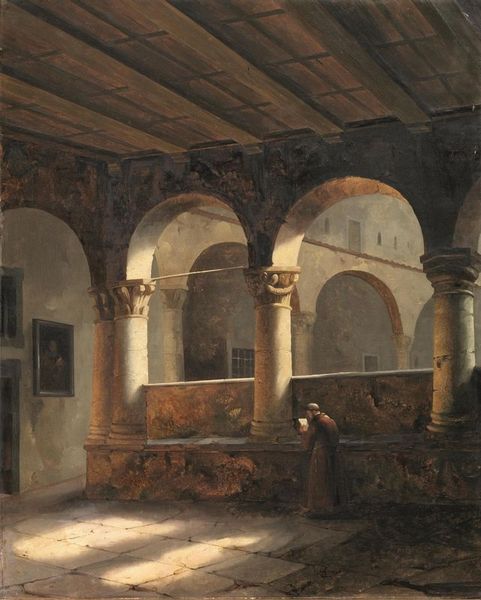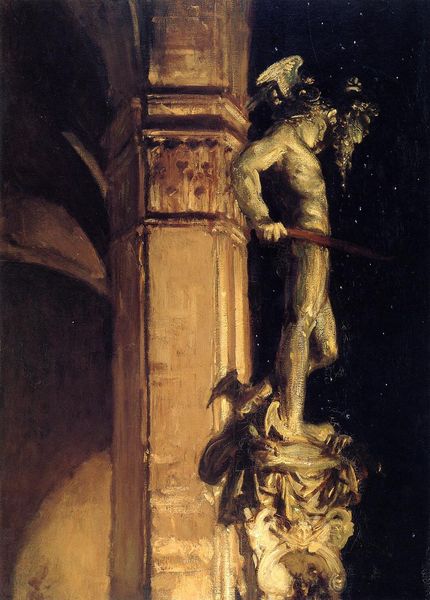
Dimensions: 46.99 x 33.02 cm
Copyright: Public domain
Curator: Before us hangs Albert Bierstadt’s “Sunlight and Shadow Study,” an oil-on-canvas painting from 1855. It's currently housed right here at the Newark Museum. What strikes you about it initially? Editor: The way the light filters through – it's almost theatrical. The hard edges of the stonework against those dappled shadows create a feeling of age, of layers of stories embedded within the very material of the architecture. But also, that gated doorway feels very…restrictive, doesn't it? Curator: Bierstadt was a master of Romantic landscape, of course. Think about the physical process of layering oil paint to evoke these textures – the stone, the light, the implied decay of the surfaces. It begs questions about architectural labor, doesn't it? Who built this? Who maintained it, and at what cost? Editor: Absolutely. I’m struck by how the image speaks to access, to barriers – both physical and metaphorical. Look at the religious figures; they signify, perhaps, restricted spaces for women, for queer folk, or people of color. It reminds me of power structures solidified through architecture and religious dogma. Curator: Bierstadt clearly took great care to render the interplay between natural light and the man-made structure. We're seeing, effectively, a demonstration of technique, a celebration of artistic skill. Editor: But shouldn't we also consider that focus on craft itself as a product of its time? The erasure of the builders, the laborers—focusing solely on Bierstadt's hand distracts from the societal systems that enabled him to create this study in the first place. The light highlights both the artistry and those historical shadows, I suppose. Curator: Point taken. Even with its Romantic flourishes, the painting documents a specific moment, a material reality. Editor: Ultimately, viewing this today compels me to reflect on which histories are illuminated and, conversely, which stories remain perpetually obscured. It makes me want to examine similar spaces—literally and figuratively—through fresh, more equitable lenses.
Comments
No comments
Be the first to comment and join the conversation on the ultimate creative platform.
